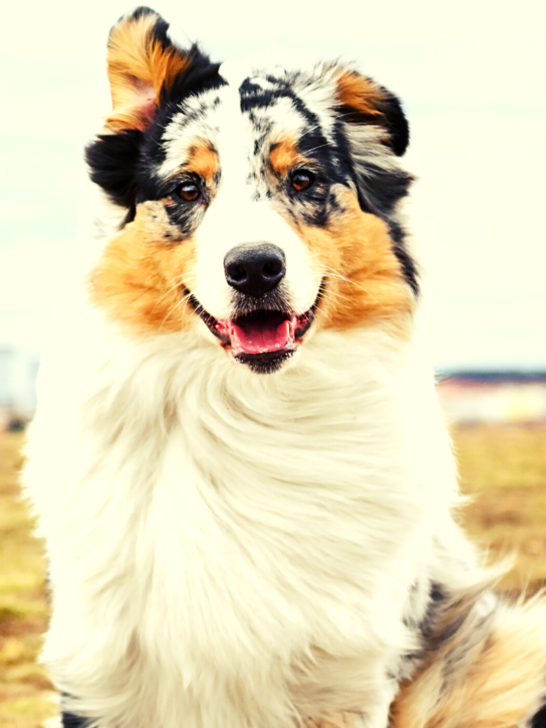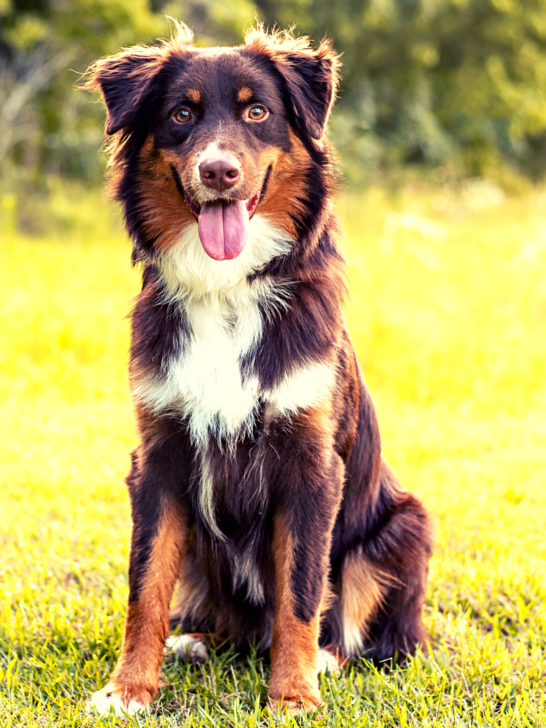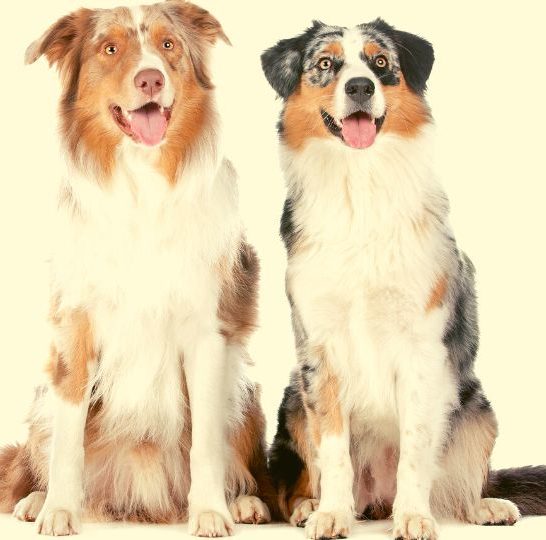Guide To Soothing Your Teething Aussie Puppy
Known for their playfulness, intelligence, and loyalty, Australian shepherds are one of the most popular dog breeds among pet owners.
But like other breeds, Aussies, as they are affectionately known, go through a painful teething phase when they are puppies.
If you don’t know what to expect or how to handle those trying moments when your teething puppy is acting out, this stage of your Aussie’s life can be challenging for both dog and owner.
Do you have an Aussie puppy going through the teething process?
Keep reading for essential tips for comforting your dog and getting both of you through this short-lived but difficult period.
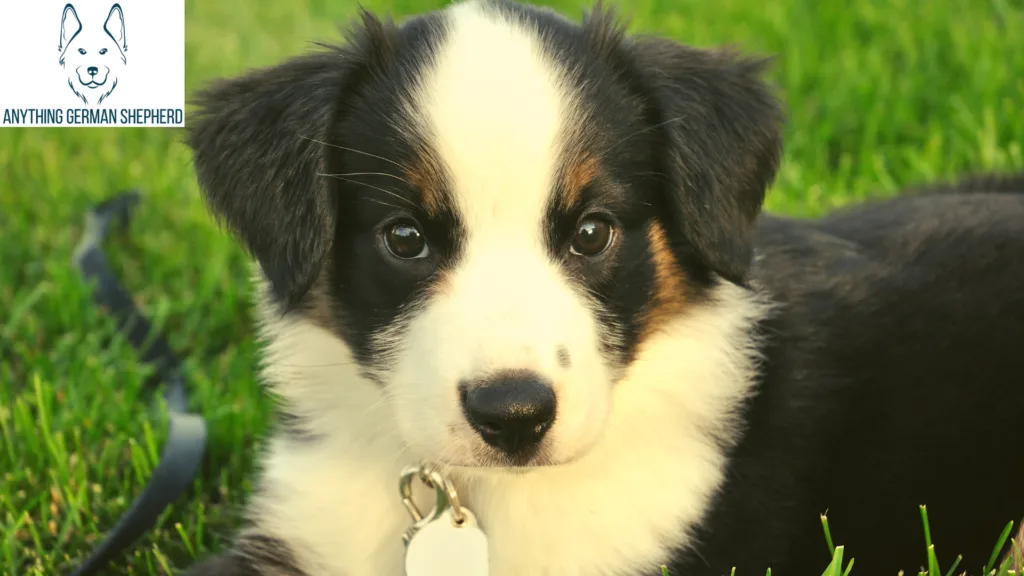
When Do Australian Shepherds Start Teething?
Australian shepherds progress through the early stages of their life similarly to people.
Like human newborns, Aussie puppies are completely helpless during the neonatal stage and unable to open their eyes or hear anything.
Puppies are born without teeth, and a liquid diet of mother’s milk provides all of their dietary needs during the early stages of life.
Like other dog breeds (and humans, for that matter), Australian shepherds go through two sets of teeth during their lifetime: baby teeth and adult teeth.
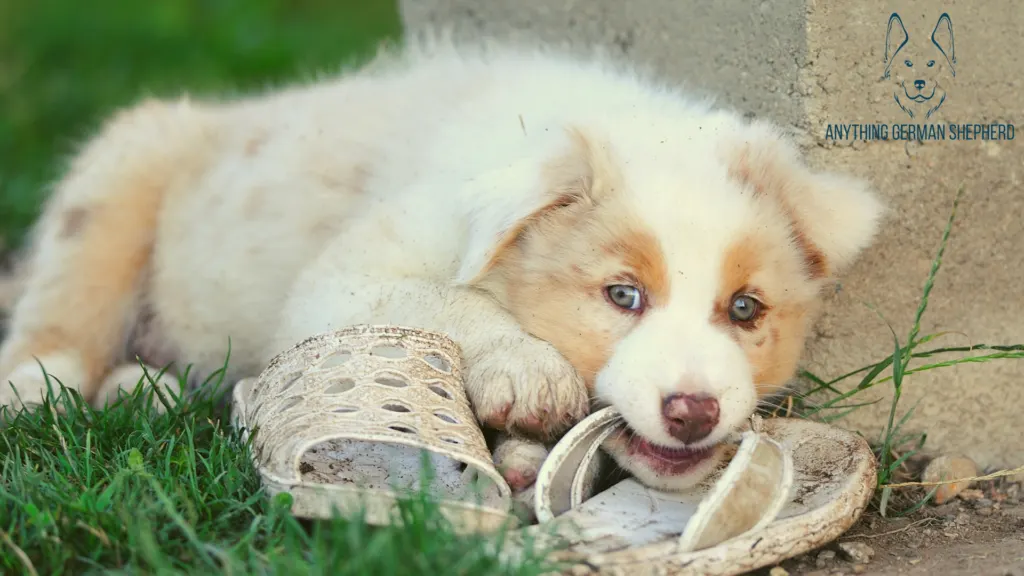
The development of these teeth in Aussies more or less follows this timetable:
- At birth, Australian shepherds have no visible teeth.
- At four weeks old, Aussies rely on their mothers’ milk for nourishment, and their baby teeth are beginning to emerge.
- The eruption of the baby teeth is also a teething process, but it is one that most dog owners never witness because, at this young age, the puppy is still with its mother and breeder.
- By the sixth week, all 28 baby teeth should be fully developed, and at this point, Aussie puppies are weaning off their mothers’ milk and progressing toward a diet of solid food (around this time is also when new dog owners bring their puppies home).
Teething in Aussie puppies typically begins between their 12th and 16th week (three to four months).
During this period, the baby teeth (also known as the primary, deciduous, and needle teeth for their razor-sharp tips) fall out to be replaced by the permanent teeth that will serve the dog for the remainder of its years.
By six or seven months, the teething phase should be complete, and an Australian shepherd’s baby teeth will have all fallen out and replaced by the dog’s permanent teeth.
Timing may vary slightly from one Aussie to another, but any baby teeth remaining in the mouth beyond seven months should be brought to a vet’s attention for removal.
What Are the Signs That an Aussie Puppy Is Teething?
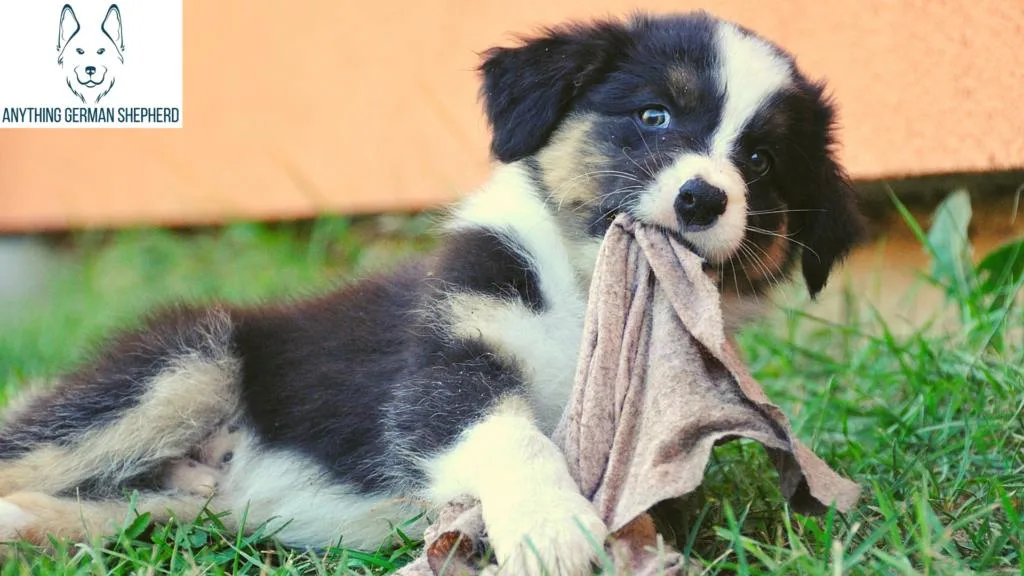
Start preparing for teething if your Aussie puppy is between 12 to 16 weeks old.
The more you know about this process and what things to expect, the better equipped you’ll be to deal with this challenging phase of your Australian shepherd’s life.
Recognizing the signs that your Aussie puppy is teething will give you a jumpstart on providing comfort and soothing your dog’s pain.
Here are the telltale symptoms that your little friend is teething:
- Loose teeth lying around – the most obvious sign that your young Australian shepherd is teething is finding stray baby teeth on the floor, in your puppy’s bedding, or even lodged in a favorite chew toy.
- Small amounts of blood – a dead giveaway your Aussie puppy is teething is small amounts of blood on items like chew toys, blankets, pillows, and other things your dog likes to mouth or chew on.
- Increased chewing behavior – speaking of chewing, a teething puppy will also exhibit increased biting and chewing behavior (a natural self-help mechanism) as it tries to alleviate its pain and discomfort – putting away items like shoes, slippers, and other attractive chewables might be a good move.
- Increased drooling – you may also observe an increased amount of drool caused by sore and inflamed gums.
- Unusual eating habits – because teething can be painful for some puppies, you may notice that your puppy’s appetite has decreased or that it eats smaller portions at a noticeably slower pace than before.
- Changed behavior – while teething, your pet may not seem like its usual self. Changes in the dog’s behavior can include a lack of energy, distress or anxiety, and unusual whining or whimpering.
- Additional symptoms – other signs that your Aussie puppy is teething are a low, persistent fever and raw gums, swollen, tender, and possibly bleeding.
The teething stage can be challenging to navigate whether your Aussie puppy exhibits one or all of these symptoms.
While several months may seem like an eternity as your pet experiences discomfort and pain, rest assured that this phase will eventually pass.
By the time your Australian shepherd is seven months old, the teething phase may already be a fading memory.
How To Soothe My Teething Aussie Puppy
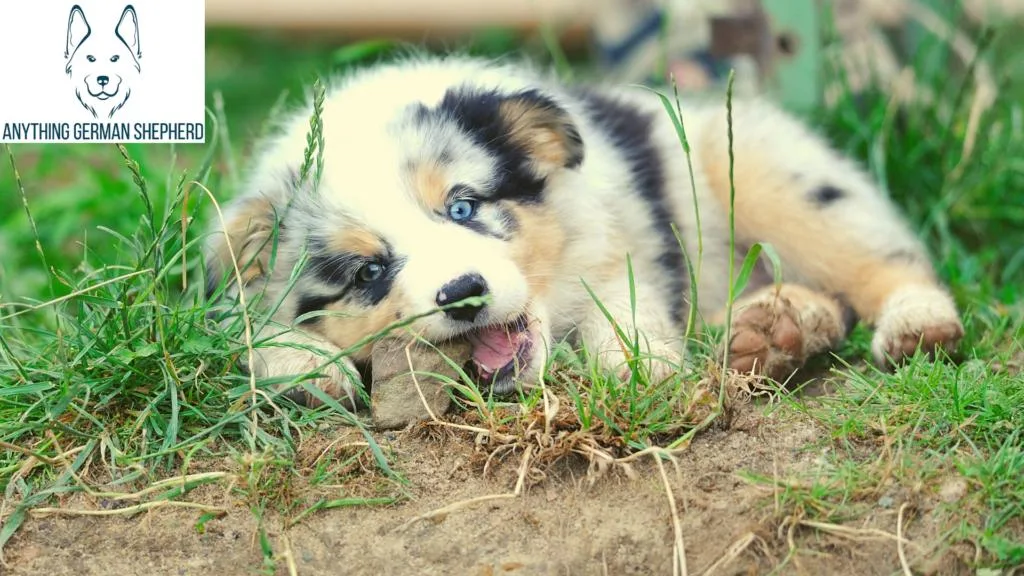
Watching a loved one suffer can be a helpless feeling, especially when it’s your Aussie puppy going through a painful teething phase.
Thankfully, there are steps you can take to help alleviate some of the discomfort and distress of your poor teething puppy.
Here are a few proven strategies for soothing your teething Aussie puppy:
- Chew toys – a teething puppy’s natural behavior for dealing with pain and discomfort is to chew on things, so providing toys to chew on (especially ones designed for teething puppies) is a proven way to soothe your pet.
- Frozen treats – another effective strategy for alleviating teething pain is to give your Aussie puppy frozen treats or toys to chew on as gnawing on chilled items will numb tender gums and provide much-needed relief from the pain; some things to consider freezing include carrot sticks, cucumber slices, apple slices, small towels, pieces of thick rope, and puppy chew toys.
- Gum massages – for a more hands-on (no pun intended) approach, gently massaging your puppy’s gums with your fingers can provide soothing relief from teething pain while acclimating your pet to future dental practices like brushing – just be careful with any remaining baby teeth in your pet’s mouth as they can be very sharp.
- Home remedies – if you prefer a homeopathic approach toward soothing your Aussie puppy’s teething pain, try brewing aloe vera, chamomile, lavender, or other naturally analgesic herbs into a tea and either moistening your pet’s food with the liquid or squirting a bit of it directly into the puppy’s mouth.
- Medication – on those rare occasions when nothing seems to work, and your Aussie puppy’s pain is unmanageable, you may need to consult your vet to determine whether pain medication is appropriate.
Teething is a natural and unavoidable part of a dog’s life.
While there is nothing you can do that will eliminate discomfort completely, taking some of the actions described above will provide a measure of soothing relief for your furry loved one while providing you with some peace of mind.
How To Get My Aussie To Stop Biting During Teething?
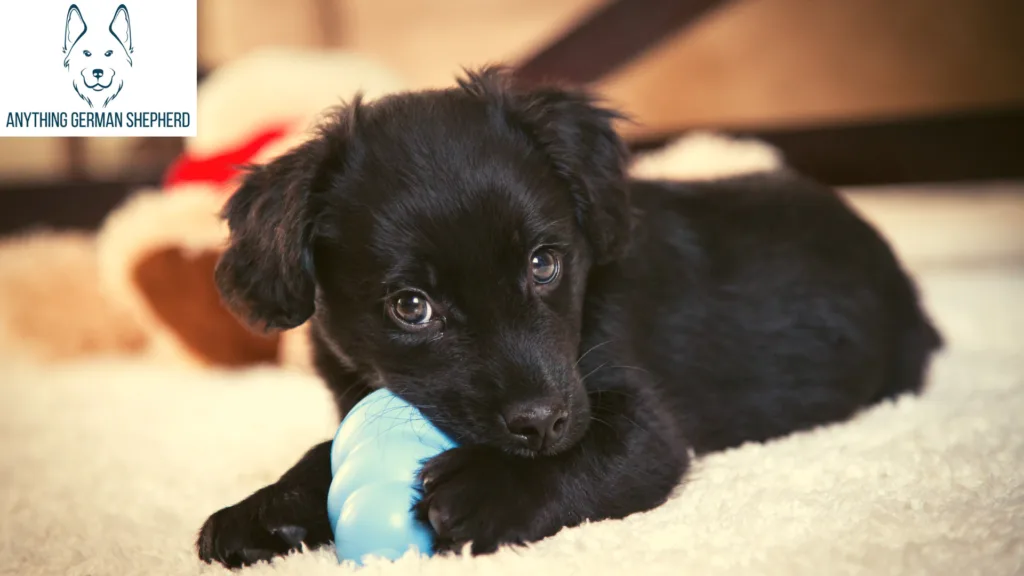
The increased amount of biting and chewing you will observe as your Aussie goes through the teething process is simply your pet’s natural behavior.
After all, the puppy tries to deal with the pain and discomfort of losing teeth while the permanent teeth take their place.
But as understandable as this behavior may be, excessive biting and chewing can be destructive, particularly where certain items like shoes, slippers, and pillows (not to mention peoples’ hands, legs, and feet), are concerned.
Here are a few tips for getting your Aussie to stop the excessive biting and chewing during teething:
- Chew toys – by providing your Aussie with toys meant for biting and chewing, you can teach it to recognize the difference between items that are okay to chew on and those that are not.
- Reward good behavior – praise your Aussie for choosing the chew toys versus items like your shoes, slippers, or furniture.
- Remove temptations – create an environment where tempting items are out of reach or out of sight.
- Never encourage biting – even if it seems like harmless play, never allow your Aussie to think that biting people is okay.
- Recognize acceptable chewing behavior – Aussie puppies, like all dog breeds, learn much about the world around them with their mouths, so it is essential to recognize that certain biting and chewing behaviors are completely normal and should be encouraged.
- Discourage destructive chewing behavior – by the same token, destructive chewing or biting behavior should be pointed out to your Aussie in a firm yet loving way.
Australian shepherds are naturally inquisitive and energetic, particularly during their developmental phase.
As puppies, they will put things in their mouth and bite on objects to satisfy their curiosity.
Teaching your Aussie the boundaries of acceptable biting and chewing behavior will benefit both of you, not just as you navigate the teething phase but also in the years that follow.
FAQs
Here are some commonly asked questions about teething Aussie puppies.
How Many Teeth Do Aussies Have?
Aussies start with 28 deciduous, or baby, teeth that fall out by their sixth or seventh month. These are replaced by 42 permanent teeth, which consist of:
- Upper jaw – 6 incisors, 2 canines, 8 premolars, 4 molars
- Lower jaw – 6 incisors, 2 canines, 8 premolars, 6 molars
Like other dog breeds, Aussies are susceptible to dental disease, so regular brushing (twice weekly) and periodic checkups are musts.
What if My Aussie Swallows a Tooth?
Because of their small size, baby teeth getting swallowed by a teething Aussie while eating or gnawing on a favorite chew toy is a common occurrence.
There is no need for concern as the tooth will pass through your pet’s digestive system without any ill effects.
Is It Necessary To Take My Teething Aussie Puppy to a Vet?
Make no mistake, teething is a difficult period for Aussie puppies because of the pain and discomfort they must deal with for weeks and possibly months.
But it is a phase that all dog breeds go through, so there is no need to take your teething Aussie puppy to the vet unless you observe any of the following symptoms:
- Baby teeth remain in your puppy’s mouth after the seventh month.
- Your Aussie has a persistent or high-grade fever.
- You see excessive bleeding from your pet’s mouth.
- Your dog’s breath is unusually bad or has a different smell (this could be a sign of an infection).
- There is excessive or prolonged swelling of your Aussie’s gums.
In all likelihood, your Aussie will get through teething just fine seeing a vet, but it is a good idea to know these signs just in case.
How Painful Is Teething for Aussies?
While teething certainly does not rise to the level of excruciating pain, it can cause quite a bit of discomfort and anxiety in Aussie puppies.
Giving your little friend some frozen treats to ease their pain and an extra bit of patience will go a long way to helping your Aussie to get through this challenging phase of its young life.
Is It Okay To Give My Teething Aussie Ice Cubes?
While chomping on ice cubes can give your teething Aussie some measure of relief from the pain, there’s a good chance that it’ll swallow them before they do it any good.
Ice cubes are also very hard and can damage its newly erupted permanent teeth.
The better options are to give your pet chilled chew toys or frozen treats like carrot sticks and apple slices.
Final Thoughts
Teething is a normal part of every dog’s life and a phase that can be a trying time for your Aussie puppy.
As its baby teeth fall out and are replaced by permanent teeth, your dog can experience a great deal of pain, distress, and anxiety.
Your Australian shepherd is not the only one who will be challenged during the teething phase.
As an owner, you may experience moments of feeling helpless and frustrated while your furry little friend suffers.
Thankfully, there are things you can do to comfort your puppy. Providing frozen chew toys will soothe its aches, and giving herbal medicine can alleviate its pain.
But the best thing you can do is to exercise patience and demonstrate that you’re in it together.


























